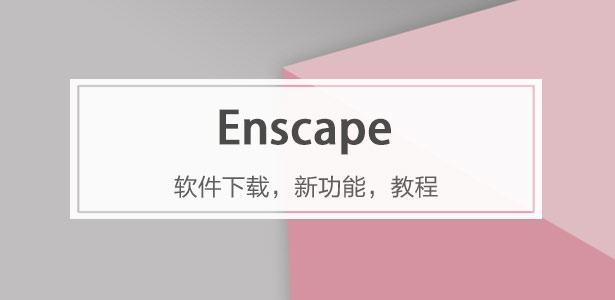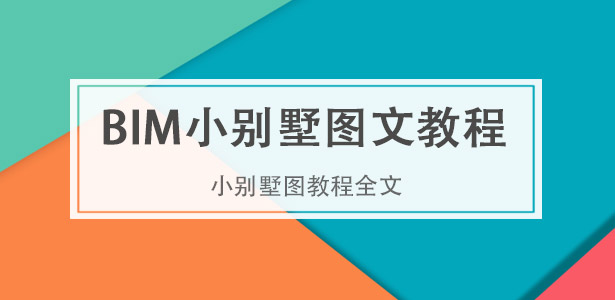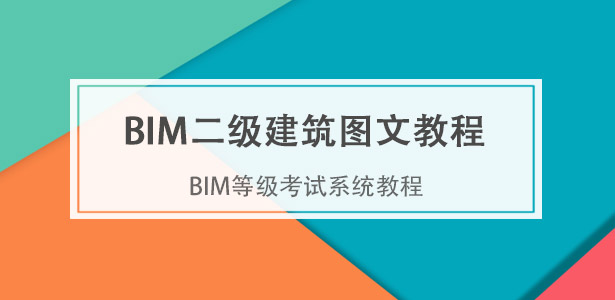* 主體類型
* 企業(yè)名稱
* 信用代碼
* 所在行業(yè)
* 企業(yè)規(guī)模
* 所在職位
* 姓名
* 所在行業(yè)
* 學(xué)歷
* 工作性質(zhì)
請(qǐng)先選擇行業(yè)
您還可以選擇以下福利:
行業(yè)福利,領(lǐng)完即止!

下載app免費(fèi)領(lǐng)取會(huì)員



Osaka Expo 2025 Healthcare Pavilion Nest for Reborn / Tohata Architects & Engineers
由專筑網(wǎng)氧泡泡,小R編譯
該展館由大阪府與大阪市共同打造,亮相于2025年日本大阪關(guān)西世博會(huì)。結(jié)合“重生”主題,展館旨在通過設(shè)計(jì)新一代建筑、與環(huán)境共生建筑來體現(xiàn)主辦城市的愿景,為實(shí)現(xiàn)可持續(xù)發(fā)展目標(biāo)、建設(shè)有機(jī)社會(huì)貢獻(xiàn)力量。設(shè)計(jì)靈感源自大阪作為“水之城”的歷史文化——這是一座因木材與水而繁榮的城市。展館對(duì)這些核心元素進(jìn)行了創(chuàng)新性詮釋與呈現(xiàn),打造了新的建筑地標(biāo),向世界展示大阪的魅力與發(fā)展。
Text description provided by the architects. This pavilion is presented by Osaka Prefecture and Osaka City at the Expo2025 Osaka, Kansai, Japan. Under the main theme of "REBORN," it aims to embody the host city's vision by creating a next-generation, environmentally symbiotic architecture that contributes to the realization of SDGs and a decarbonized society. Inspired by the history and culture of "Water City Osaka," which has thrived on wood and water, the pavilion reinterprets these elements to create a new architectural landmark that showcases Osaka's charm and growth to the world.


獨(dú)特的薄膜屋頂,形態(tài)各異的屋頂設(shè)計(jì),象征了大阪的多樣性。循環(huán)水流經(jīng)屋頂形成“水面紗”,匯入下方水池。池水經(jīng)過濾后,在可持續(xù)系統(tǒng)中循環(huán)利用。內(nèi)部和外部飾面均使用大阪府的當(dāng)?shù)匕啬尽V型ャ逶≡谌岷汀唏g的光線中,營(yíng)造出寧靜溫馨的空間,原始木材的色澤和獨(dú)特氣息,使置身其中的參觀者倍感舒適和放松。
The unique membrane roof, with no two shapes alike, represents the persity of Osaka. "Water Veil" is formed as recycled water flows over the roof, cascading into a water basin below, where it is filtered and recirculated in a sustainable system. Locally sourced cypress from Osaka Prefecture is used for the interior and exterior finishes. The central atrium is bathed in soft, dappled light, creating a serene and inviting space filled with the warmth and fragrance of wood—a true symbol of relaxation and comfort.


中庭和展覽空間采用橢圓形平面設(shè)計(jì),有機(jī)地重疊在一起。這些橢圓通過緩坡連接,形成流暢的參觀動(dòng)線,構(gòu)成包容性空間布局,確保所有參觀者獲得一致的參觀體驗(yàn)。中庭的木質(zhì)螺旋柱靈感來自 DNA 結(jié)構(gòu),象征性地支撐著多樣化的屋頂形態(tài)。
The atrium and exhibition spaces are designed with elliptical floor plans that organically overlap. These ellipses are continuously connected by gentle slopes, creating a seamless circulation route that allows all visitors to experience the same exhibition path—an inclusive spatial layout. The wooden helical column in the atrium, inspired by DNA, symbolically supports the perse roof forms.


木制螺旋柱及所有內(nèi)外部飾面均使用來自大阪府的當(dāng)?shù)啬静摹榱擞行У剡^濾和漫射屋頂自然光,建筑師采用了一種新材料,該材料是通過從回收紙漿中捻出紗線并將其縫制成類似紡織品的織物。此外,輕巧靈活的新一代過氧化物太陽能電池以懸掛方式呈現(xiàn),為太陽能的利用提供了一種新穎的表現(xiàn)形式。
The wooden helical column and all interior and exterior finishes use locally sourced timber from Osaka Prefecture. To appropriately filter and diffuse natural light from the roof, we used a new material, made by twisting yarn from recycled pulp and sewing it into a textile-like fabric. In addition, lightweight and flexible next-generation perovskite solar cells are suspended in banner form, presenting a new expression of solar energy use.



為了實(shí)現(xiàn)復(fù)雜的設(shè)計(jì)造型,建筑師在設(shè)計(jì)過程中充分運(yùn)用了計(jì)算機(jī)技術(shù)。膜屋頂?shù)拿總€(gè)曲面都是由不同半徑的球體修剪而成的球形片段組成。這種球形幾何形狀,便于透明膜的安裝和桁架結(jié)構(gòu)的有效布置。開發(fā) 3D 模型用于模擬“水面紗”的效果和環(huán)境情況。
To realize the complex forms, we embraced new design methods utilizing computational design. Each curved surface of the membrane roof is composed of spherical segments generated by trimming spheres of various radii. By using spherical geometry, we made it easier to fit the transparent membrane and arrange the truss structure efficiently. The 3D model we developed was used for simulating "Water Veil" and environmental conditions.




支撐膜屋頂?shù)哪局坡菪鶠槭?DNA 啟發(fā)的雙螺旋形式。該項(xiàng)目面臨的主要挑戰(zhàn)在于如何使用木材構(gòu)建復(fù)雜的曲面形式。為了平衡美學(xué)和成本效益,項(xiàng)目最大限度地減少了彎曲木材的使用,主要依靠扁平的木質(zhì)構(gòu)件來實(shí)現(xiàn)雙螺旋結(jié)構(gòu)。
The wooden helical columns that support the membrane roof feature a double-helix form inspired by DNA. One of the major challenges was constructing these complex curved surfaces using wood. To balance aesthetics and cost efficiency, we minimized the use of bent wood and realized the double-helix structure primarily with flat wooden elements.


大阪憑借得天獨(dú)厚的河流和海洋資源,同時(shí)使用來自日本各地的木材進(jìn)行建設(shè),已發(fā)展成為一座魅力之城,并在多元特性的融合中繁榮發(fā)展。大阪醫(yī)療保健館是進(jìn)步的象征,完美詮釋了“再生”的主題,描繪了一個(gè)生命、可持續(xù)性和創(chuàng)新在此共同閃耀的未來。
Blessed with rivers and seas, and built using timber from all over Japan, Osaka has developed to be an attractive city and flourished through the amalgamation of many perse identities. Osaka Healthcare Pavilion stands as a symbol of progress, embodying the theme of "REBORN." A future where life, sustainability, and innovation shine together.

















建筑設(shè)計(jì):Tohata Architects & Engineers
面積: 9725 m²
時(shí)間:2024年
攝影:Tomoyuki Kusunose
主創(chuàng)建筑師:Tohata Architects & Engineers
分類:展廳
設(shè)計(jì)團(tuán)隊(duì):Yasuhito Hirano, Naruya Ojima, Yuya Muto, Misaki Nakano
工程顧問:Lighting Planners Associates
城市:大阪
國(guó)家:日本
Pavilion
Osaka, Japan
Architects: Tohata Architects & Engineers
Area: 9725 m²
Year: 2024
Photographs:Tomoyuki Kusunose
Lead Architects: Tohata Architects & Engineers
Category: Pavilion
Lead Team: Yasuhito Hirano, Naruya Ojima, Yuya Muto, Misaki Nakano
Engineering & Consulting > Lighting: Lighting Planners Associates
City: Osaka
Country: Japan
本文版權(quán)歸腿腿教學(xué)網(wǎng)及原創(chuàng)作者所有,未經(jīng)授權(quán),謝絕轉(zhuǎn)載。

上一篇:BIM機(jī)電訓(xùn)練營(yíng)配套教材-BIM實(shí)施策劃(項(xiàng)目配合協(xié)調(diào)及BIM技術(shù)保障措施)
下一篇:上海市CIM底座建設(shè)三年行動(dòng)計(jì)劃(2025-2027年)發(fā)布!
猜你喜歡

建筑賞析|十大世界建筑之最

BIM建筑|line+孟凡浩 × 科大訊飛:公園中的AI總部,一期正式啟用

BIM建筑|設(shè)計(jì)酒店113 | 東京代代木公園Trunk(Hotel):愜意生活

建筑賞析|GardenNomad,從一畝園到PudongVilla

BIM建筑|2025更新版!一份全球154座城市的建筑地圖匯總送給你

建筑賞析|“璞玉”變身高樓:三松璞玉大廈的“跨界”秀
最新課程

施工BIM定制化培訓(xùn)
Revit
45157人已學(xué)

BIM土建實(shí)戰(zhàn)訓(xùn)練 - A部分標(biāo)準(zhǔn)化建模指導(dǎo)
Revit
6473人已學(xué)

BIM土建實(shí)戰(zhàn)訓(xùn)練 - B部分 場(chǎng)地與基礎(chǔ)模型創(chuàng)建
Revit
9525人已學(xué)

BIM土建實(shí)戰(zhàn)訓(xùn)練 - C部分 地下室土建模型創(chuàng)建
Revit
14458人已學(xué)

BIM土建實(shí)戰(zhàn)訓(xùn)練 - D部分 協(xié)同工作
Revit
2944人已學(xué)

BIM土建實(shí)戰(zhàn)訓(xùn)練 - E部分 裙房及塔樓模型創(chuàng)建
Revit
5440人已學(xué)
推薦專題
- 火災(zāi)中重生的設(shè)計(jì)奇跡:設(shè)計(jì)師帶著“圓柱腿桌”和雙色木柜闖進(jìn)山間老宅
- 浮舟紀(jì)·村民中心-連接農(nóng)耕生活與自然景觀
- 光,才是這個(gè)家的真正設(shè)計(jì)師
- 讓自然融入三層空間的詩意居所,光影、綠意、木質(zhì)感,家的質(zhì)感拉滿了
- JKMM贏得芬蘭新建筑與設(shè)計(jì)博物館競(jìng)賽,預(yù)計(jì)2030年建成
- 展銷共存、多場(chǎng)景融合的上海虹橋進(jìn)口商品展示交易中心
- 走進(jìn)那個(gè)讓全村人相遇的786㎡大屋頂:西烏素圖村民中心漫游記
- 月山建筑新作:紫房子庭院式酒店|項(xiàng)目推介
- 建筑師中的建筑師:走近阿爾瓦羅·西扎
- 寺院之城:布哈拉|河中漫記·烏茲別克斯坦



































